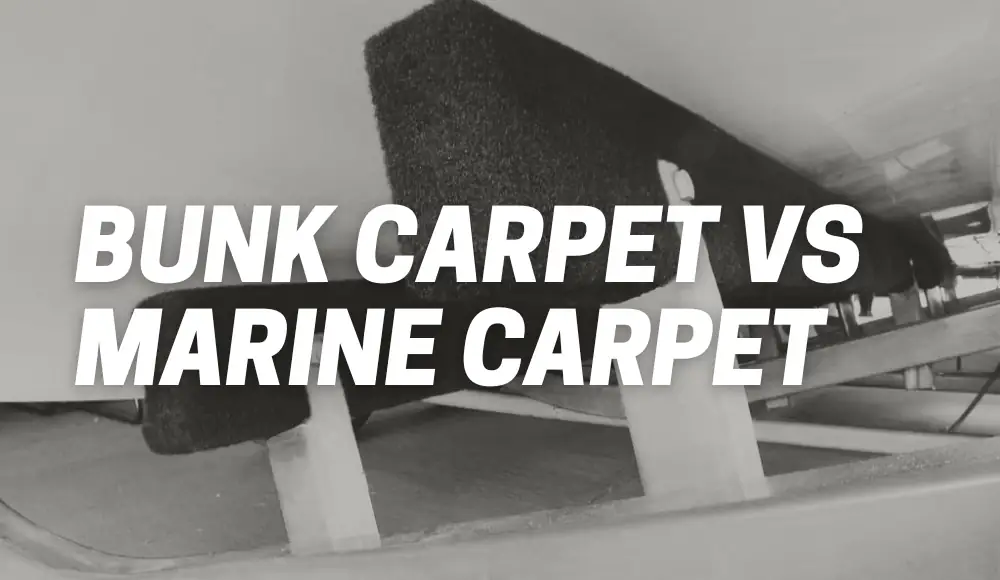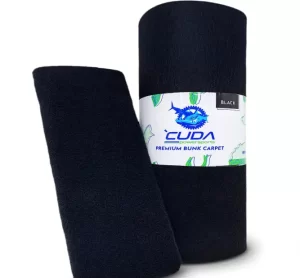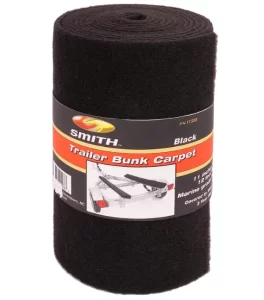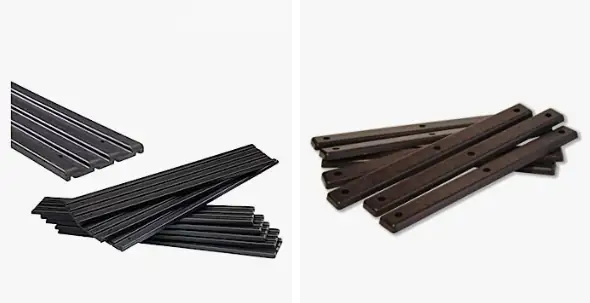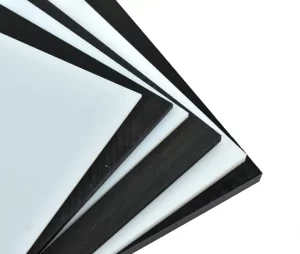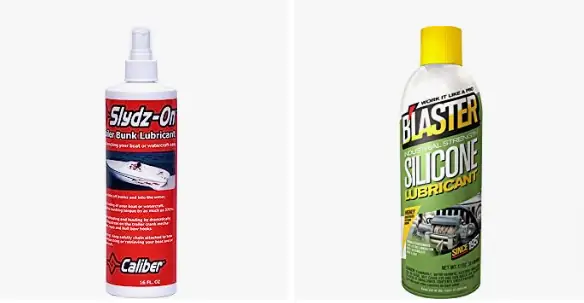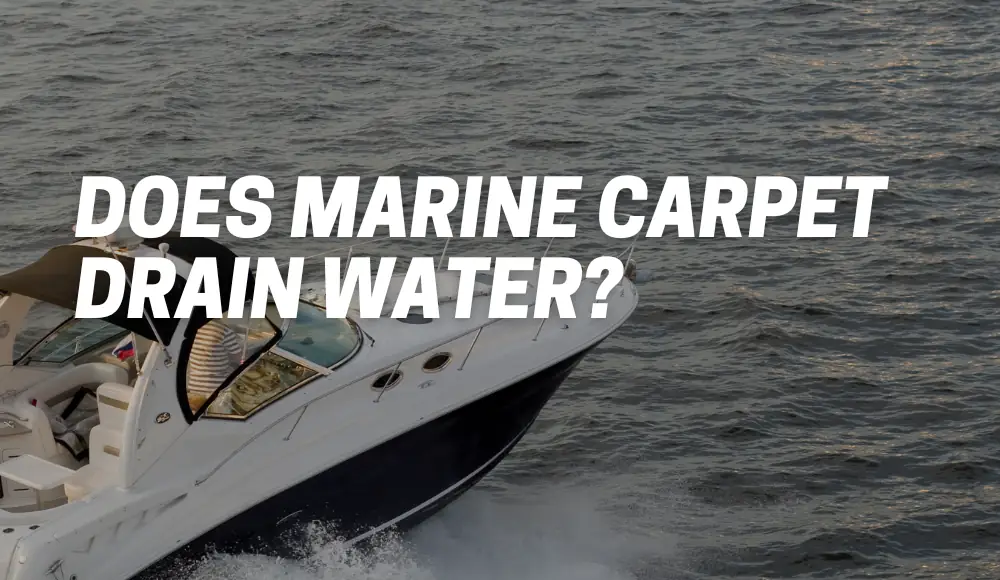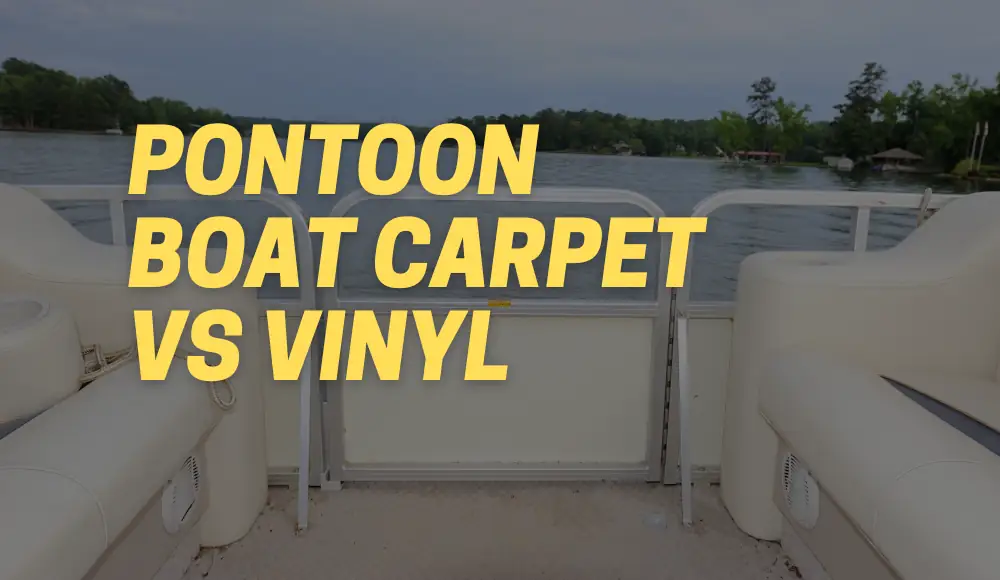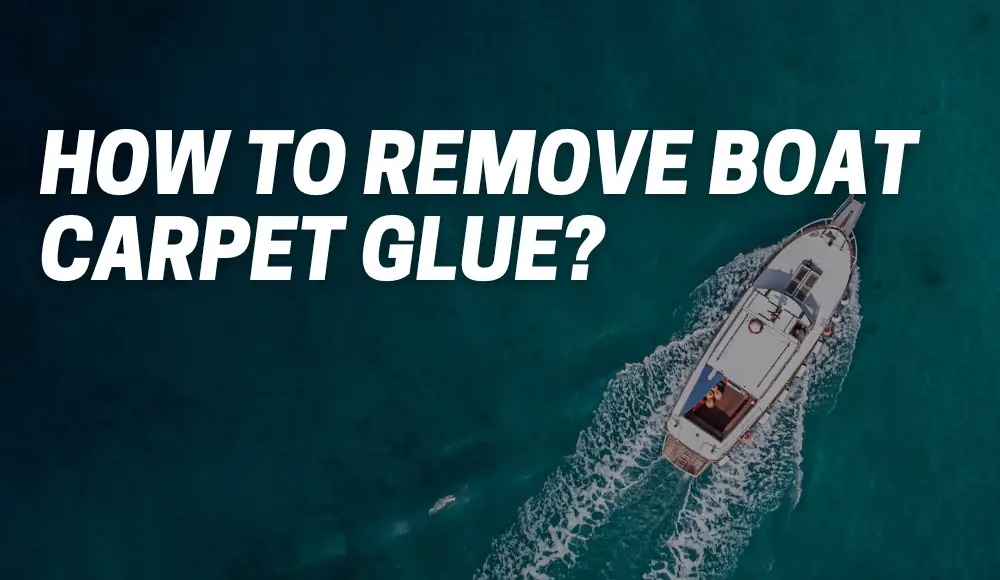Last updated on October 18th, 2023 at 03:10 am
When it comes to maintaining and protecting your boat or pontoon, every component matters. One often overlooked yet crucial aspect is the carpeted boards on your boat trailer, also known as bunk carpet. These carpets provide essential support and protection to your vessel during transportation and storage. In this guide, we’ll delve into the world of marine bunk carpets, discussing their types, benefits, and how bunk carpet vs marine carpet compare.
So, let’s dive in!
What are the Carpeted Boards on a Boat Trailer Called?
First things first, let’s remind the terms.
Before we explore the differences between bunk carpet vs marine carpet, let’s clarify the terminology. The carpeted boards found on a boat trailer are called trailer bunks.
These bunks serve as a platform for supporting the boat hull during transit and keeping it secure while loading and unloading.

What is Bunk Carpet and Why is it Used?
Bunk carpet serves as a protective layer between the boat and trailer, preventing any damage from occurring during transportation. It can also be used as a flooring option for boats or pontoons that don’t require waterproofing.
One of the benefits of using bunk carpet is its affordability.
Compared to marine carpet, which can be more expensive due to its waterproof properties, bunk carpet is an inexpensive option for those who want to protect their boat during transportation or simply need an affordable flooring option for their boat or pontoon.
It’s also easy to install, making it a great DIY project for boat owners who want to save money on installation costs.
What is the Best Carpet to Use on Boat Trailer Bunks?
Now that we’ve discussed the importance of trailer bunks let’s focus on the type of carpet that provides optimal performance and protection for your boat.
Marine bunk carpet is specifically designed for this purpose.
Marine bunk carpet is made from durable, weather-resistant materials such as marine-grade polypropylene. This type of carpet offers excellent UV resistance, ensuring it can withstand prolonged exposure to sunlight without fading or deteriorating.
It is also resistant to mold and mildew, preventing unpleasant odors and preserving the overall integrity of your boat.
When selecting marine bunk carpet, opt for a high-quality option with a dense pile and sturdy backing.
A thicker pile provides better cushioning and protection for your boat hull, reducing the risk of scratches and damage.
Additionally, a robust backing material ensures that the carpet remains securely attached to the trailer bunks even during rough transport conditions.
Bunk Carpet vs Marine Carpet
While marine bunk carpet is specifically designed for boat trailer bunks, marine carpet is intended for use within the boat itself. Although they may seem similar, there are a few key differences between the two.
Marine bunk carpet is typically more rugged and durable than marine carpet, as it needs to withstand external elements such as water, dirt, and UV rays. It provides the necessary support and protection for your boat during transportation.
Marine carpet, on the other hand, is designed for the interior of your boat. It is often softer and more comfortable underfoot, providing a pleasant surface for passengers to walk or sit on. Marine carpet comes in various styles and colors to match the aesthetic of your boat’s interior.
It’s essential to use the appropriate carpet in each area to maximize performance and longevity.
Installing marine bunk carpet on your boat trailer bunks ensures the best protection and support, while marine carpet enhances the comfort and appearance of the boat’s interior.
What kind of carpet do you use for boat bunks?
When it comes to choosing carpet for boat bunks, marine bunk carpet is the recommended option.
Marine bunk carpet is specifically designed for the unique requirements of boat trailer bunks. It is made from durable, weather-resistant materials to withstand the harsh conditions encountered during boat transportation and storage.
Here are some key features and considerations for marine bunk carpet:
- Material: Marine bunk carpet is typically made from marine-grade polypropylene or similar synthetic fibers. These materials are designed to be resistant to UV rays, moisture, mold, and mildew, ensuring the carpet’s longevity and performance.
- UV Resistance: The sun’s UV rays can cause ordinary carpet to fade and deteriorate quickly. Marine bunk carpet is specially treated to provide excellent UV resistance, preventing color fading and ensuring the carpet remains durable and visually appealing over time.
- Water Resistance: Boat trailers are frequently exposed to water during launch and retrieval, so it’s crucial to choose a carpet that is resistant to moisture. Marine bunk carpet is designed to repel water, preventing the absorption of moisture that can lead to mold, mildew, and unpleasant odors.
- Thickness and Pile Density: Opt for marine bunk carpet with a thicker pile and dense fibers. A thicker pile provides better cushioning and protection for your boat hull, reducing the risk of scratches and damage during transportation.
- Backing Material: The backing of marine bunk carpet should be sturdy and resistant to wear and tear. A strong backing ensures that the carpet remains securely attached to the trailer bunks, even during rough transport conditions.
By using marine bunk carpet on your boat trailer bunks, you can ensure optimal protection for your boat hull, reduce the risk of scratches, and provide a reliable surface for easy loading and unloading.
Remember to choose a high-quality marine bunk carpet that meets your specific needs and follow proper installation guidelines for best results.
Best Carpet for Boat Trailer Bunks
20 oz Marine Bunk Carpet
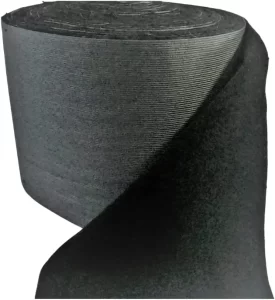
Cuda Boat trailer bunk carpet
CE Smith bunk carpet
How to Make Boat Trailer Bunks Slick?
To make your boat trailer bunks slick, there are a few methods you can employ:
- Bunk Slicks: Bunk slicks are specially designed strips made from low-friction materials that reduce friction between the boat hull and the trailer bunks. These strips can be attached to the bunk surface, allowing for smoother launching and retrieval.
- Teflon or UHMW Polyethylene: Applying Teflon or UHMW (Ultra-High-Molecular-Weight) polyethylene strips to the bunk surface can significantly reduce friction. These materials provide exceptional slipperiness and are resistant to wear and tear.
- Silicone Lubricants: Applying a silicone-based lubricant to the bunk carpet can temporarily reduce friction and make the surface slicker. However, keep in mind that lubricants may need to be reapplied regularly and can attract dirt and debris.
Bunk Slicks
UHMW Polyethylene Strips
Silicone Lubricant
By implementing these methods, you can enhance the slickness of your boat trailer bunks, making launching and retrieving your boat a smoother and more efficient process.
What Can I Make Trailer Bunks Out Of?
If you’re looking for alternative materials for your trailer bunks, several options are worth considering:
- Aluminum: Aluminum bunks offer an excellent strength-to-weight ratio and are resistant to corrosion. They provide a lightweight and durable solution for boat trailers, particularly for saltwater environments.
- Composite Materials: Composite bunks, often made from a combination of fiberglass and resin, offer superior durability and resistance to moisture, rot, and UV damage. They provide a long-lasting alternative to traditional wooden bunks.
- Rubber: Rubber bunks provide excellent cushioning and protection for your boat hull. They are resistant to weathering, UV rays, and chemicals, making them a reliable option for boat trailers.
When choosing alternative materials for your trailer bunks, consider factors such as durability, maintenance requirements, and the specific needs of your boat and trailer.
FAQs
What is the Best Material for Trailer Bunks?
Choosing the right material for your trailer bunks is vital to ensure proper support and protection for your boat.
The two primary materials commonly used for trailer bunks are wood and plastic.
Wooden bunks have been a traditional choice for boat owners due to their affordability and accessibility. However, wood is prone to rot, decay, and warping when exposed to moisture, which can lead to structural issues and damage to your boat hull over time.
On the other hand, plastic boat bunks, often made of high-density polyethylene (HDPE), offer several advantages. They are impervious to moisture, resist rotting and warping, and provide a durable and long-lasting solution for boat trailers.
Plastic bunks also offer improved slickness, reducing friction during launch and retrieval.
What is the best material to use for boat trailer bunks
| Pressure-Treated Wood: Pressure-treated wood is a popular choice for boat trailer bunks. It is affordable, readily available, and offers decent durability. The pressure treatment process helps protect the wood from moisture, rot, and decay. However, it’s important to note that wood can still be prone to warping and deterioration over time, especially when exposed to water frequently. |
| High-Density Polyethylene (HDPE): HDPE plastic bunks have gained popularity due to their excellent durability and resistance to moisture, rot, and UV damage. Plastic bunks provide a long-lasting solution and are less likely to warp or deteriorate compared to wood. They also offer better slickness, reducing friction during launching and retrieval. |
| Composite Materials: Composite bunks, typically made from a combination of fiberglass and resin, offer impressive strength, durability, and resistance to moisture and rot. They provide an alternative to traditional wood bunks, combining the benefits of both wood and plastic. Composite bunks are highly resistant to warping, cracking, and UV damage, making them a reliable choice for boat trailer bunks. |
Should a Boat Sit on Rollers or Bunks?
The choice between rollers and bunks depends on your specific boat and trailer setup. Rollers are suitable for boats that are light, smaller, and easy to launch.
Bunks, on the other hand, provide better support for larger boats and those with a more substantial hull. Consider the weight, size, and shape of your boat when deciding between rollers and bunks.
Do You Glue Carpet on Boat Trailer Bunks?
While some boat owners choose to glue the carpet onto the boat trailer bunks, it is not always necessary.
High-quality marine bunk carpet often comes with a sturdy backing that can be secured to the bunks using staples, screws, or other fasteners. Gluing the carpet can make replacement more challenging in the future, so it’s important to consider your specific needs and preferences before making a decision.
Conclusion
Selecting the right carpet for your boat trailer bunks is crucial for maintaining the integrity of your boat and ensuring smooth and safe transportation. Marine bunk carpet offers exceptional durability, UV resistance, and protection against moisture, mold, and mildew.
By choosing the appropriate material, ensuring slickness, and using proper installation methods, you can enjoy worry-free boat trips and extend the lifespan of your boat trailer.
